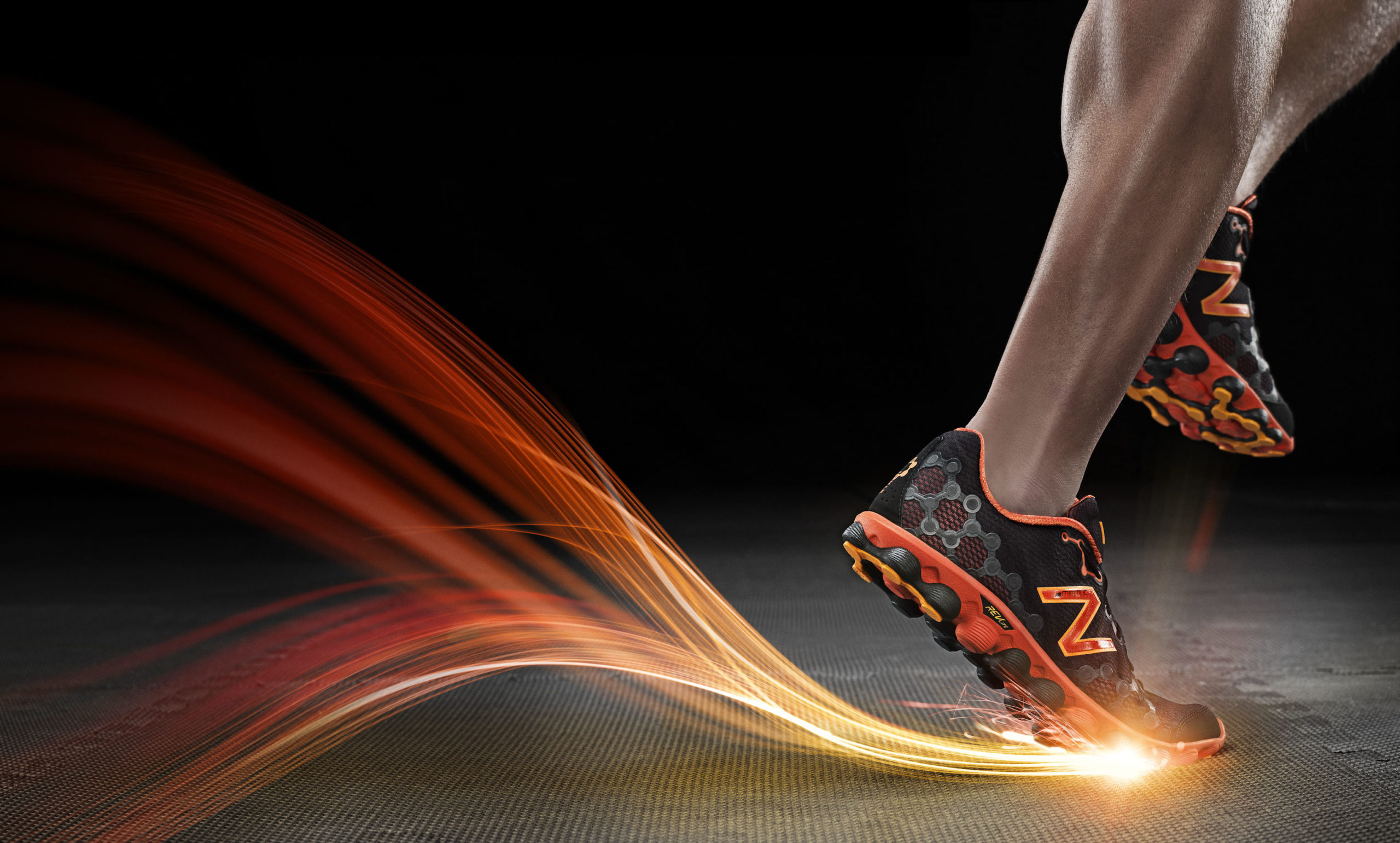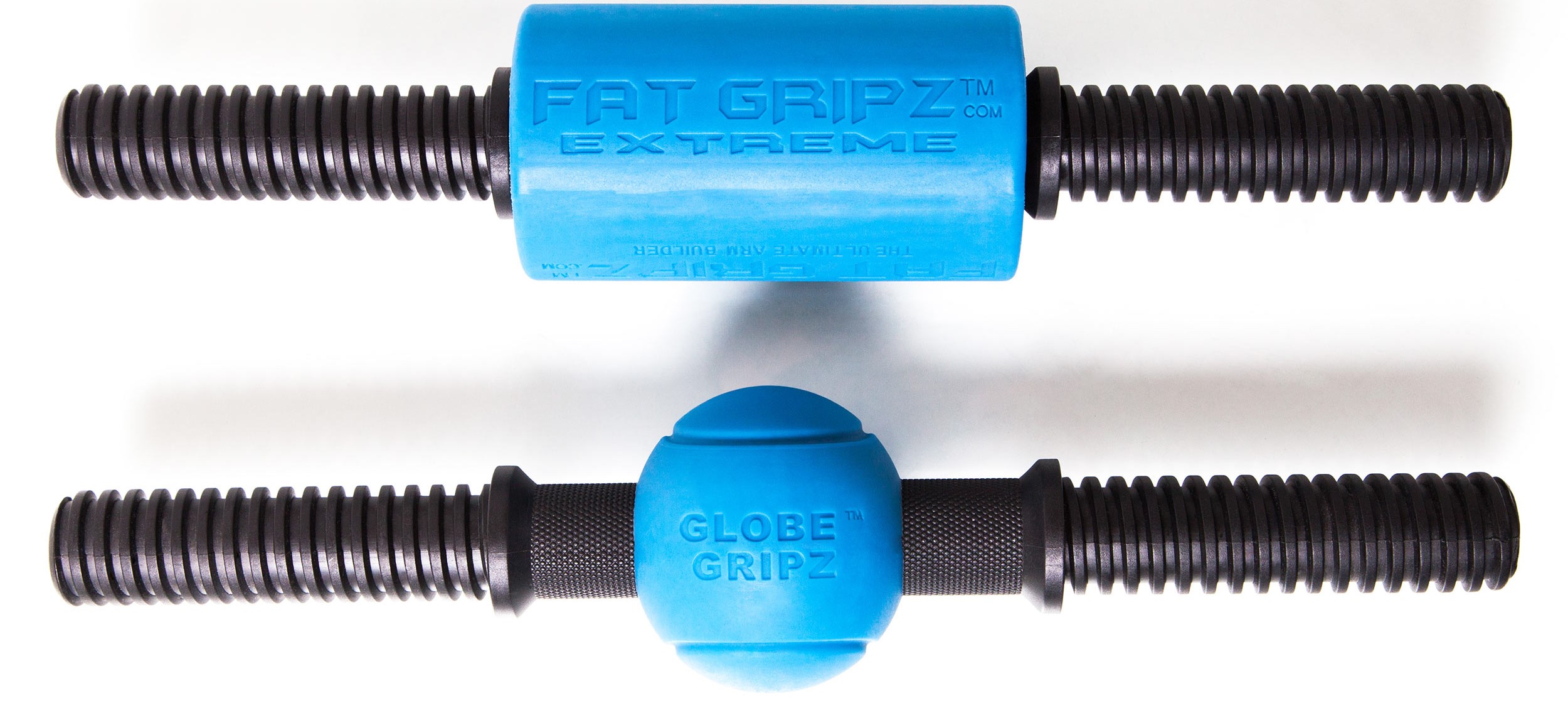Ranking of the best telescopes for 2025
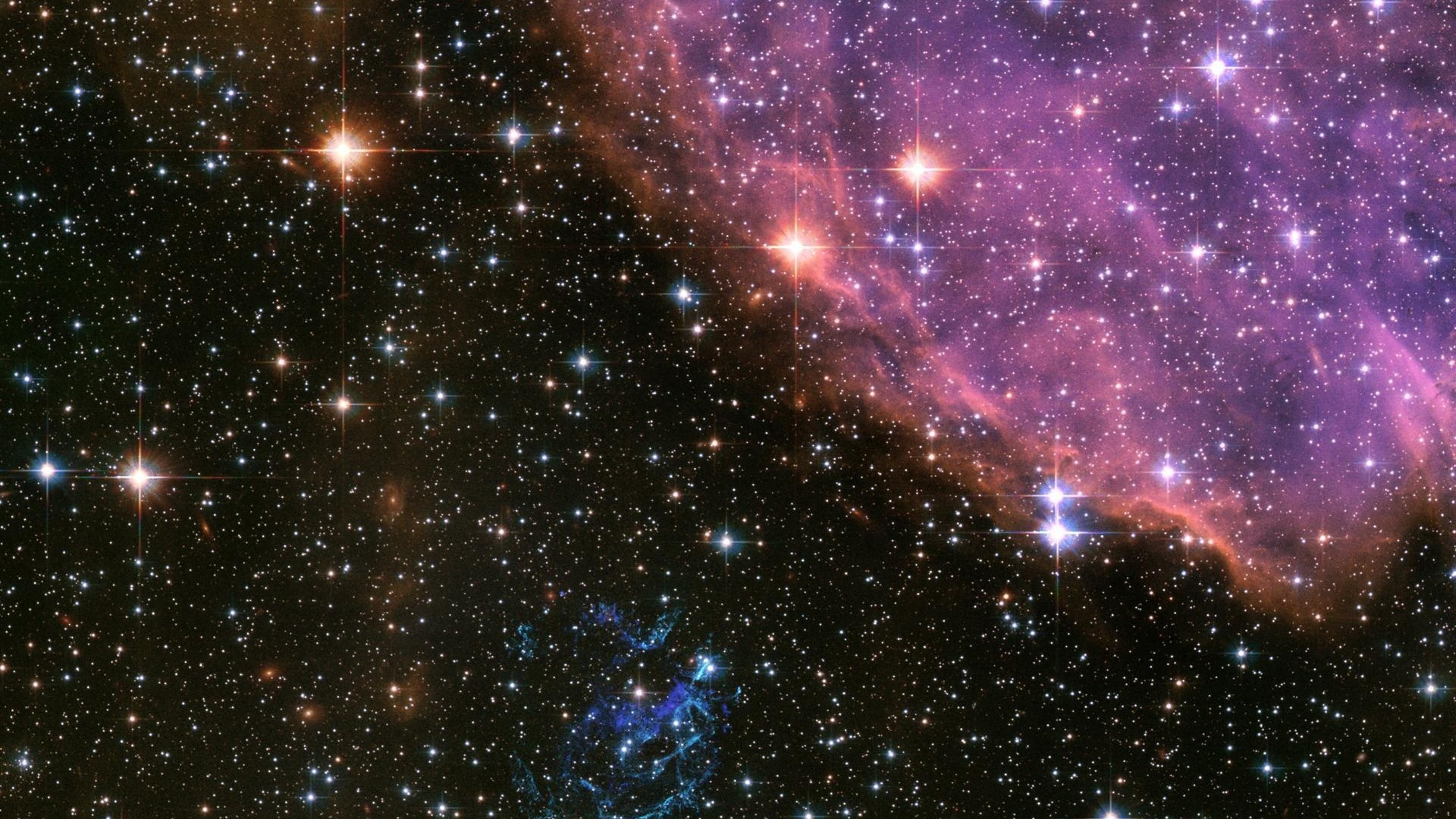
Since its inception, the design of telescopes has undergone significant changes. Now, in order to view craters on the surface of the Moon, to observe the change of seasons on Mars, it is enough to buy a compact telescope and turn a veranda in a country house or a balcony in a high-rise building into a real observatory.
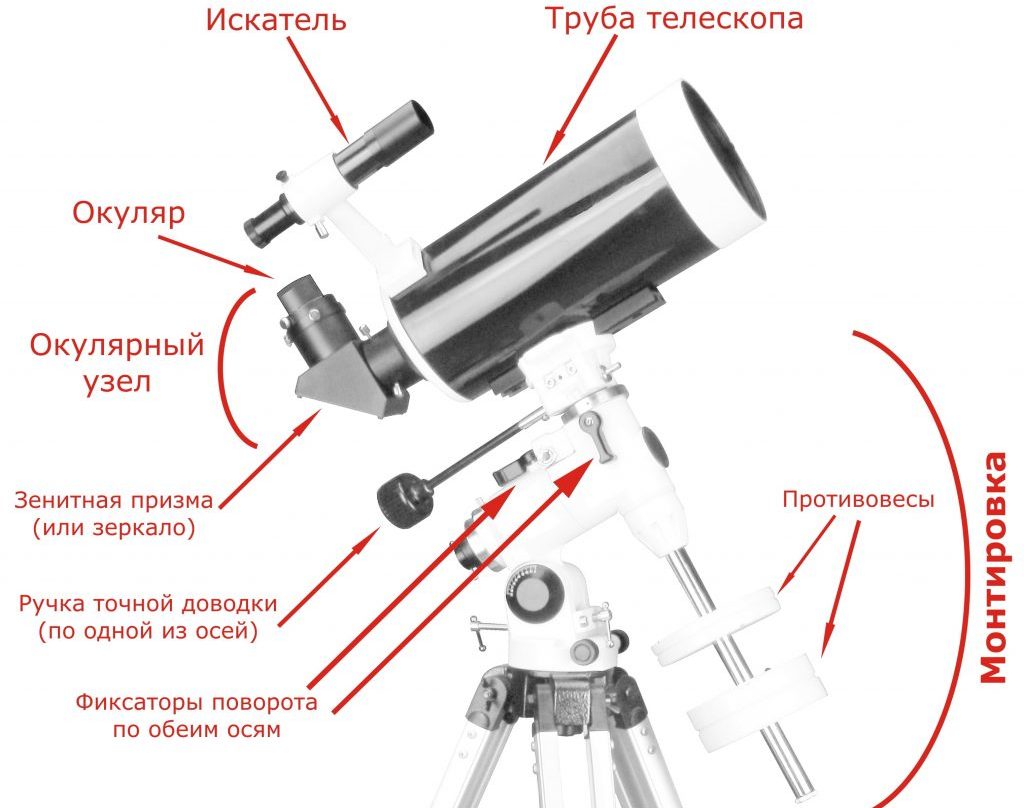
Content [Hide]
How a telescope works
The principle of operation of all telescopes is the same - lenses collect light rays, focusing them at one point. The larger the lens surface, the more detailed and sharper the image.
Depending on the design features and the method of “working” with light, telescopes are divided into 3 main types:
- A refractor is a biconvex lens located in front of the tube. After passing through the lens, the light is refracted, collected in the focal plane and forms an image. High-quality refractors can give a good image, but the only drawback is the color fringing, which is called chromatic aberration. This image defect is manifested by clear boundaries of the colors of the spectrum - red, blue, green, and a visible rainbow halo around the boundaries of the object. The reason is that one lens cannot focus all the shades of the spectrum. To solve the problem, manufacturers either increase the focal length, or use 2 lenses from different types of glass. Achromatic refractors are equipped with 2 spherical lenses with different curvature, which reduces chromatic aberration.
- A reflector is an optical telescope that uses mirrors instead of lenses. Due to their good luminosity, such devices are suitable for studying dim objects. High picture quality and affordable price make reflectors popular among hobbyists. But, in addition to the obvious advantages, optical devices have their drawbacks. The design itself contributes to the deterioration of resolution (the rays, passing through a diagonal mirror, are distorted).The problem could be solved by increasing the diameter of the lens, but then it would be necessary to proportionally increase the length of the tube. As a result, the design would become too cumbersome.
- Mirror-lens - combine the advantages of mirrors and glass lenses. They feature a compact design and high image quality.
For beginners, refractors are suitable. No complicated settings, built-in electronics - everyone can manage them. The price of such models is more than acceptable, and the functionality is enough to consider most of the objects of the solar system. The only drawback when used in urban environments is street lighting, which can light up the picture. Therefore, it is better to watch the starry sky somewhere outside the city. By the way, most refractors have a collapsible design, so there will be no problems with transportation.
Mirror telescopes are more suitable for adults. To cope with a lot of settings to get a good image, it will be difficult for small users.
What to look for when choosing
In addition to the design itself, it is worth paying attention to the following device parameters:
- the diameter of the optical element (lens or mirror) - the larger it is, the better the image quality (indicated by the letter D in the specifications)
- aperture (A);
- approximation.
As well as resolution indicators - the higher they are, the more detailed the image (when using a telescope, it will not be possible to consider objects that are close to each other separately, one, double, will be visible).
It is also worth paying attention to the dimensions. If you are going to study the starry sky from the balcony, choose compact models.
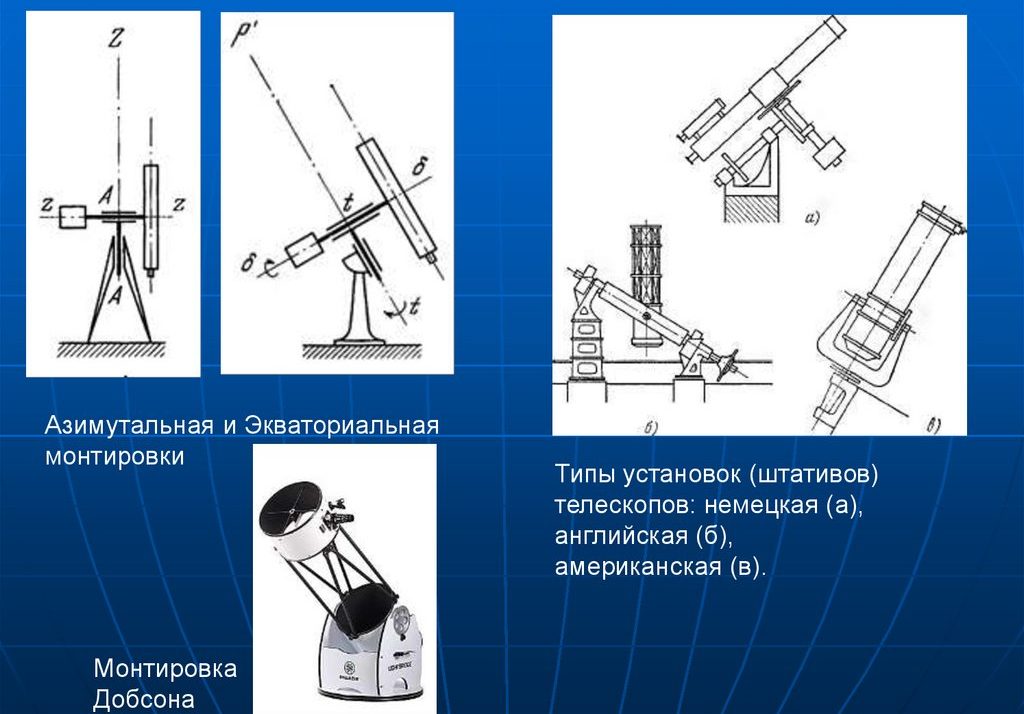
Design features
It is worth paying attention to the mount of the telescope. In this case, the mount is the part of the structure on which the optical tube is mounted. It consists of a base, two axes responsible for the rotation of the pipe, a drive and a system for reading the rotation angles.
It is from the mount that the convenience in work, the reliability of the installation of the device in the working position and ease of control depend.
There are only 2 types of mount (not counting the various variations) - these are equatorial and azimuthal. Each has its own merits and demerits. For example, the Azimuth mount is an easy-to-use and stable mounting system with intuitive controls that even a child can handle. Telescopes with an azimuthal mount are more compact, so you can easily take them with you to the country.
Devices with an azimuth mount usually cost an order of magnitude more expensive, but allow not only to consider dim and distant objects, but also to engage in astrophotography. The main disadvantage of such telescopes is their large size and complicated setup process, so they are hardly suitable for beginners.
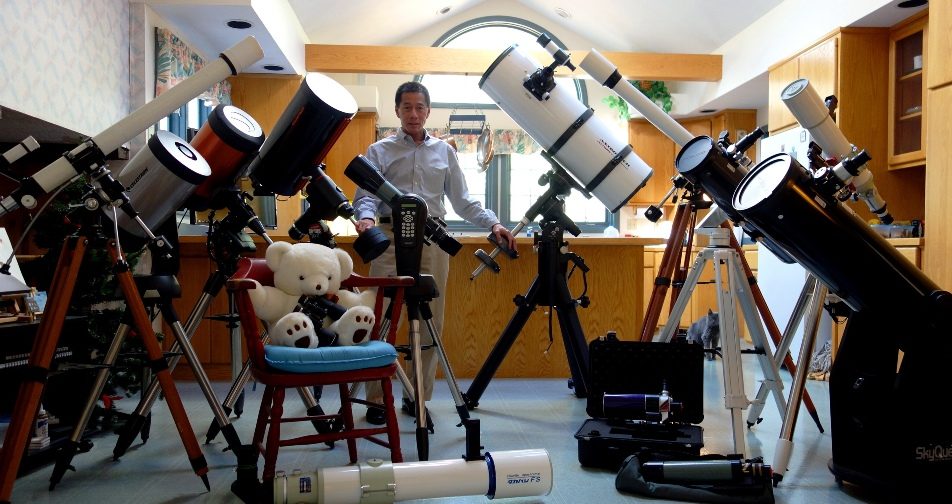
Where is the best place to buy
Telescopes are better to buy in specialized stores. Firstly, sales consultants will talk about each model from a professional point of view, without unnecessary advertising and attempts to sell a bunch of additional upgrade consumables. Such advice will be especially useful for beginners. Secondly, the choice of optics in specialized stores is several times larger, in contrast to the same hypermarkets.
The telescope can also be ordered via the Internet, just check the reviews about the site and ask a couple of questions to the manager.Ideally, the seller’s website should contain not only product cards with minimal characteristics that will tell absolutely nothing to a beginner, but also a detailed description of each model. And, yes, to eliminate the risk of damage to the optics, choose courier delivery.
When compiling the rating, user opinions, price-quality ratio, ease of use and ease of settings were taken into account.
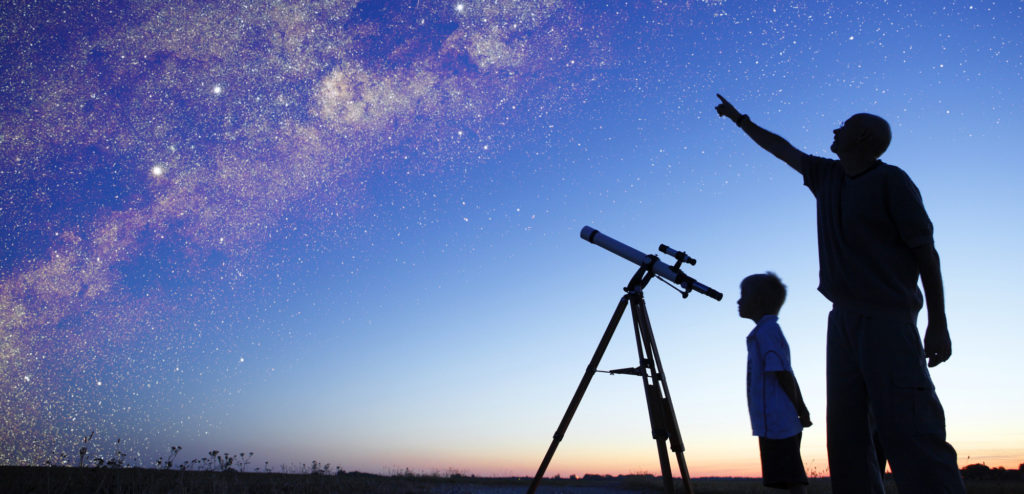
Best Children's Telescopes for 2025
Telescopes for children are compact devices with a small lens diameter (from 40 to 70 mm). The main difference from more expensive counterparts is the ease of operation. When choosing, pay attention to the reliability of the pipe attachment and the stability of the tripod.
Sturman F60050M
votes 0
Compact refractor, weighing only 1.3 kg, with intuitive controls and alt-azimuth mount. A height-adjustable tripod is included. Of course, it will not work to see dim stars through a telescope lens with a diameter of 50 mm, but the rings of Saturn or lunar craters are completely. The telescope can also be used to observe terrestrial objects - to bring a flying plane closer, or to consider clouds in the sky. In general, a good, educational toy for little money. Plus a great idea for spending time with your child.
Price - 2995 rubles
- ease of management;
- compactness;
- a great gift for a child;
- price-quality ratio.
- no.
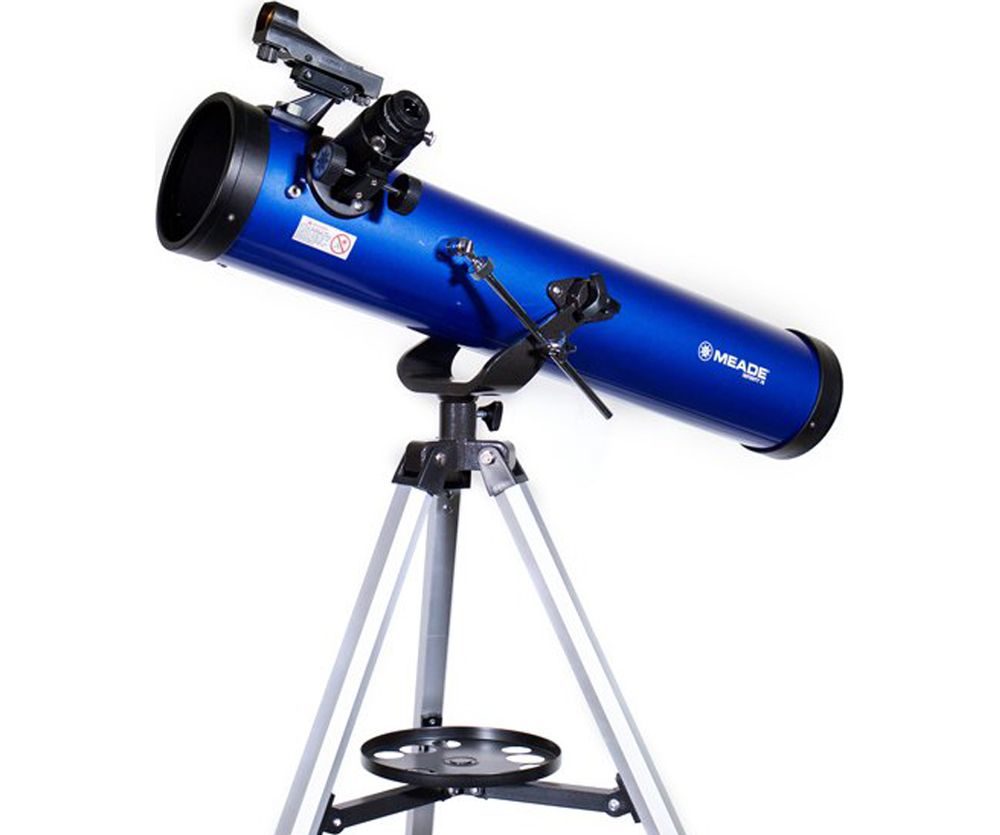
Meade Infinity
votes 0
With a lens diameter of 60 mm, it will allow you to consider many planets, stars, nebulae - the child will be delighted. Compact design on aluminum tripod adjustable in height.The mount is alt-azimuth, as simple as possible even for those who have never used a telescope.
The multi-coated lens with the supplied Barlow lens (responsible for increasing the effective focal length) gives a clear picture. The swivel pipe is securely attached to the base with screws, the control is carried out manually, with a micrometer screw in height.
Together with the telescope, the buyer receives everything necessary to start observing - 2 eyepieces for 26 and 9 mm, a direct image prism and a Red Dot finder. All accessories can be placed on a special shelf, which is mounted on a tripod.
Price - 7200 rubles
- reliable fastening of the pipe;
- convenient shelf for accessories;
- adjustable tripod;
- smooth control.
- The settings are easily messed up.
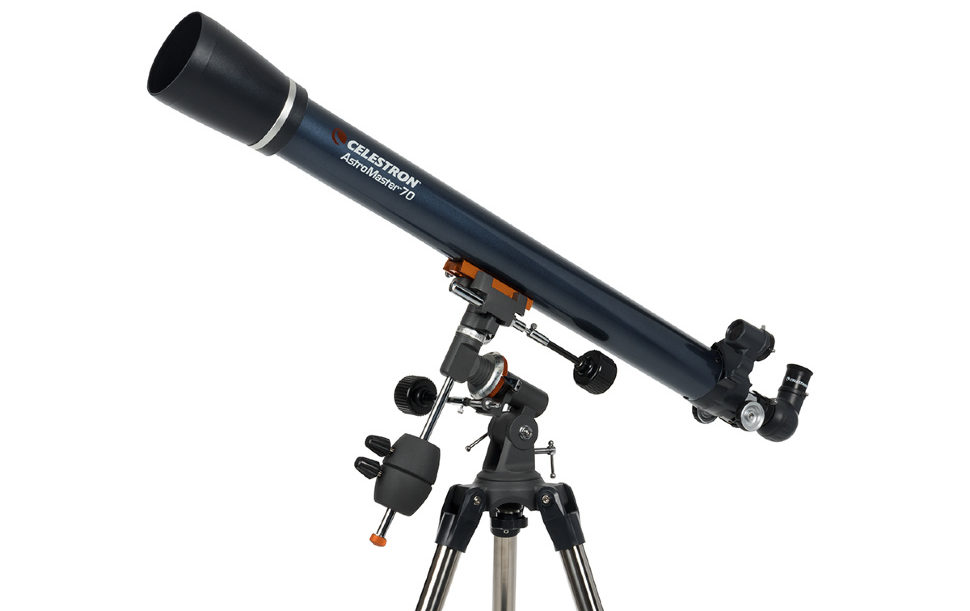
Celestron AstroMaster
votes 0
Compact device with 60 mm objective lens. Thanks to high-quality optics and multi-coated optical surfaces, it is considered one of the best telescopes in its class. Allows you to examine the stars, nebulae in detail. And thanks to the built-in StarPointer finder, you can find any object of interest. Can be used as a spyglass for observing nature.
Mount - alt-azimuth, standard for models of the budget price segment. Steel tripod provides a stable position, adjustable in height. The kit includes two eyepieces for 10 and 20 mm, a shelf for storing accessories and a disk with TheSky X program, which will tell the user about distant galaxies, the solar system.
Price - 24000 rubles
- suitable for teenagers
- durable steel tripod;
- clear, detailed picture.
- price.
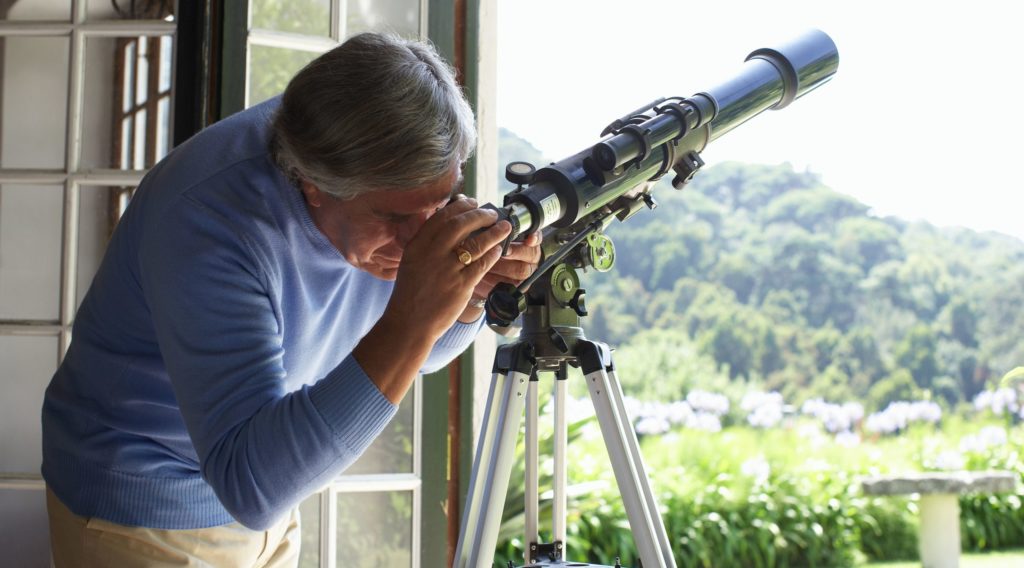
Best telescopes for beginners for 2025
Sky-Watcher BK 705AZ2
votes 0
A small achromatic is perfect for observing the Moon and the planets of the solar system. The lens with 70 mm diameter forms a clear picture with minimal optical errors (the same chromatic aberrations). A multi-layer coating of lenses makes the picture clear.
Includes 2 eyepieces Kellner 10 and 25 mm, optical finder for preliminary aiming, 2 Barlow lenses, aluminum tripod. The assembled weight of the structure is 6.9 kg.
Price - 12000 rubles
- the package contains everything you need to start observing;
- adjustable tripod;
- simple setup;
- good optical performance;
- compactness.
- to consider distant planets and dim objects will not work.
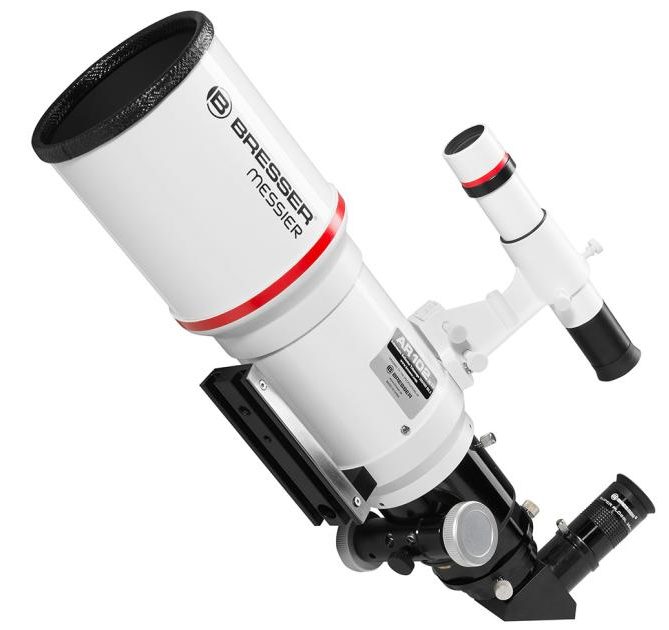
Bresser Messier AR-70/700AZ
votes 0
Long focus refractor, suitable for lunar and planetary observations. Provides a clear picture - you can even see the stripes in the atmosphere of Jupiter. Plus, the ability to take astrophotos on a smartphone camera, thanks to the built-in adapter. The robust tripod can be placed even on uneven surfaces – the height of each leg can be adjusted. A convenient shelf-tray allows you to keep everything you need for observations at hand.
Management is as simple as possible, the pipe moves freely in four directions. The kit includes eyepieces, a star chart and a Red Dot finder.
Price - 18000
- convenient management;
- the ability to adjust the tripod for a stable position even on uneven surfaces.
- powerful optics;
- no.
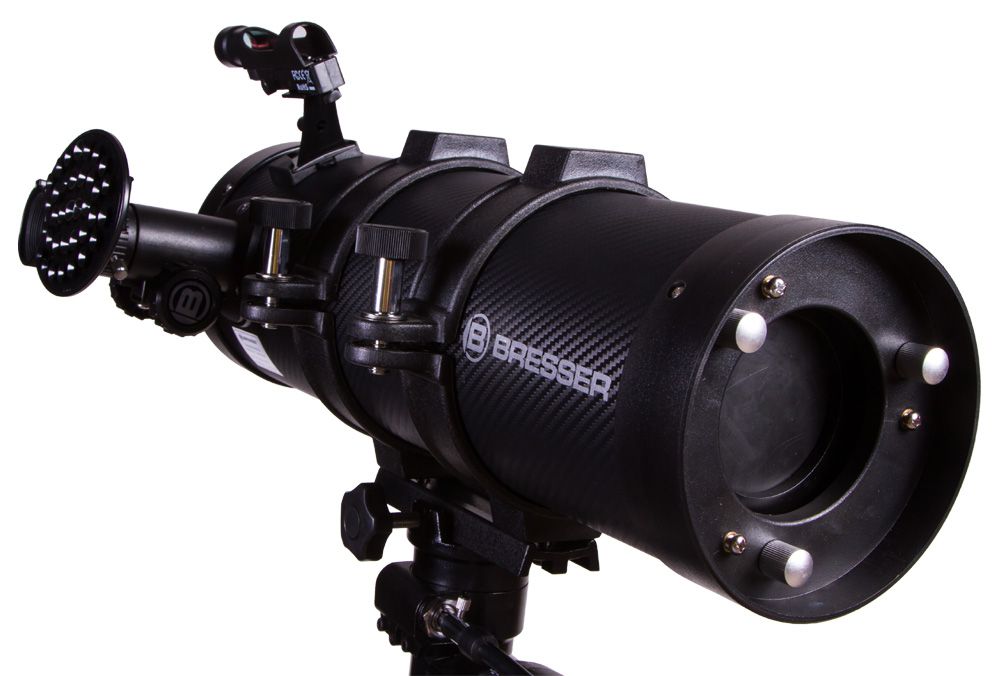
Bresser Pluto 114/500 EQ
votes 0
The compact Bresser Pluto easily fits into a medium-sized bag (despite an impressive weight of 12 kg). Suitable for both beginners and experienced astronomers. It features high-quality optics, gives a detailed image with minimal optical distortion.
With Bresser Pluto, you can watch how the Martian summer changes into autumn, follow the movement of comets, make out dim objects and bright nebulae.
The built-in finder will quickly find the desired object, and the equatorial mount will track the daily movement of the planets. The built-in adapter will allow you to take impressive pictures with your smartphone camera.
It is this model that is produced in Germany at the factories of the brand of the same name, so the quality is at its best, plus a 5-year branded warranty.
Price - 30,000 rubles
- antireflective coating of optics;
- magnification of the image (eyepieces are included) up to 375 times;
- the possibility of astrophotography;
- does not require the purchase of additional accessories;
- produces a clear picture.
- At first, it will be difficult to set up.
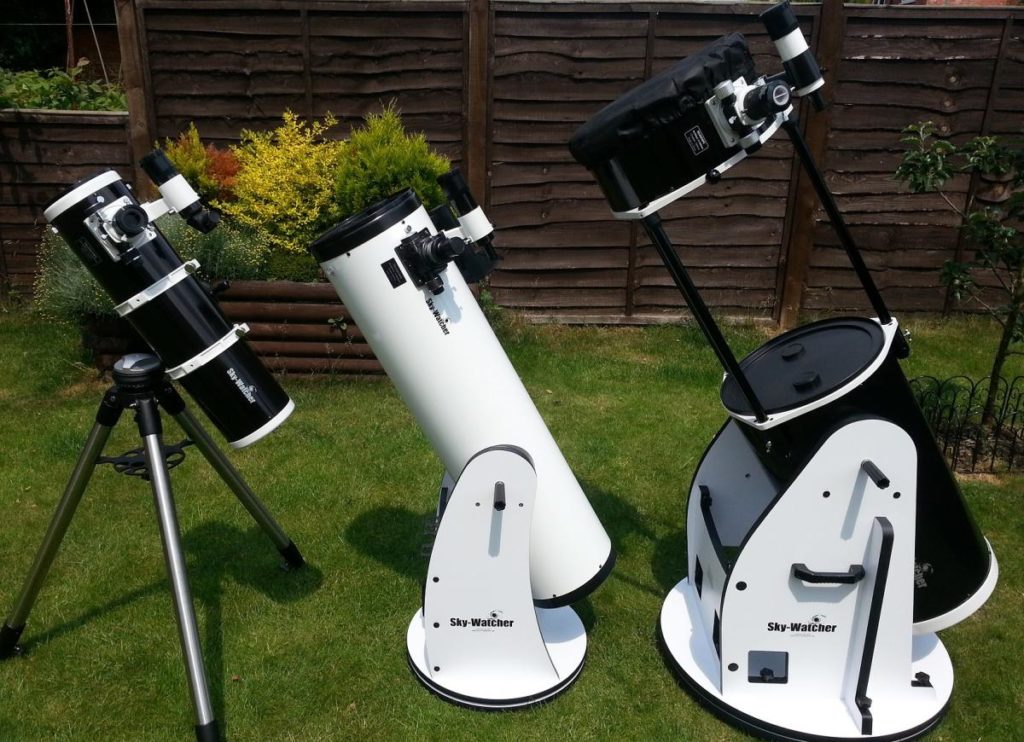
Best Telescopes for Power Users for 2025
Sky-Watcher Dob 6″
votes 0
It is practically an observatory in miniature. Suitable for a country house (unfortunately, it is unlikely to fit on the balcony). Equipped with a powerful 153 mm parabolic mirror, which allows you to see double stars, asteroids, comets, nebulae, and if you're lucky, traces of the spiral structure of bright galaxies. The thin extensions on which the secondary mirror is attached do not affect the image quality.
Mount - azimuth, does not require complex settings. The built-in adapter allows not only to take pictures of celestial bodies, but also to shoot video on a smartphone camera.Focuser - rack, with comfortable handles, which can be used to adjust the position of the optical tube.
The frame of the base-stand is made of scratch-resistant laminated chipboard. The kit includes a stand in a collapsible form with a minimum set of tools and a pair of eyepieces.
Price - 36,000 rubles
- high image quality;
- easy control - literally with one movement of the handle;
- thanks to the rack-and-pinion focuser, it is resistant to gusts of wind and vibration;
- excellent optical performance.
- minimum set of accessories.
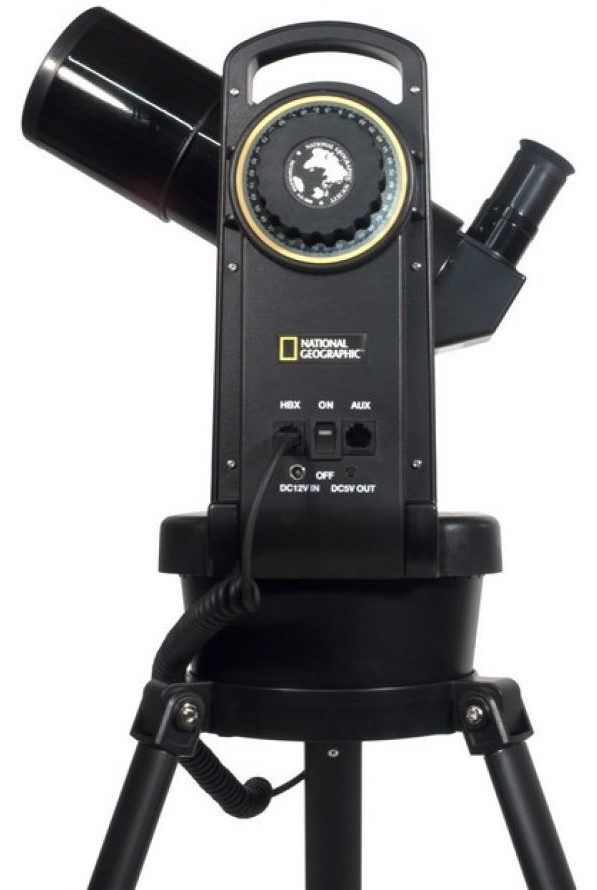
Bresser National Geographic 90/1250 GOTO
votes 1
Mirror-lens, compact, with auto-guidance function and Maksutov-Cassegrain optical scheme. More than 270,000 objects are stored in the computerized power mount's database.
Thanks to high-quality optics, you can observe the Moon and see the rings of Saturn. Adjustment is as simple as possible, small defects (such as a coma) can be eliminated by adjustment. The picture is clear and bright, thanks to the built-in tracking system, you can observe the planets for a long time without compromising your vision.
To increase the clarity of the image, you can supplement the telescope with an astrocamera, which will allow you to see and photograph new details.
Includes tripod, planisphere, 2 eyepieces, compass, moon filter and red dot finder.
Price - 67,000 rubles.
- auto-guidance allows you to easily find the desired objects;
- simple setup;
- manufacturer's warranty - 10 years
- the included lunar filter allows you to clearly see the craters;
- no optical distortion.
- No, even the high price in this case is quite justified.
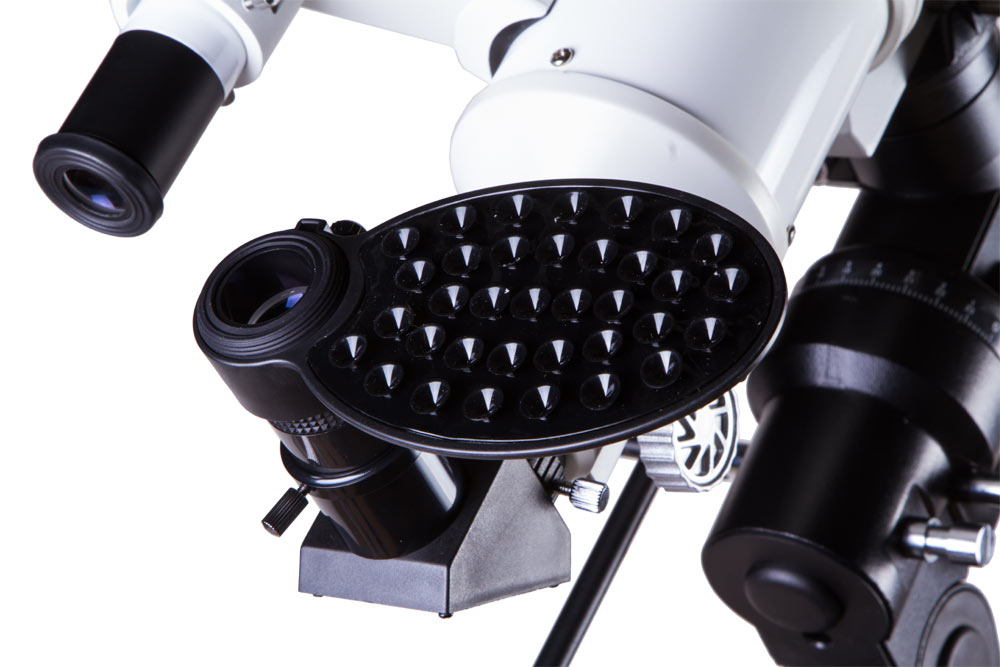
Bresser Messier 90/500 EQ3
votes 0
Achromatic refractor with 90 mm aperture delivers a clear image. Suitable for lunar and planetary observations, and with the right settings, it will allow you to see deep space objects.
The mount is equatorial, it takes a little more time to set up, but it makes it possible to keep the object in question in the field of view of the optics. The aluminum support provides reliable fixing of a pipe. Legs are separately adjustable for installation on uneven surfaces. The device is better to use outside the city, street lighting gives light and distorts the picture.
Price - 43,000 rubles.
- compactness;
- high quality picture;
- the possibility of using without a tripod;
- compact size.
- when observing in an urban environment, street light can greatly spoil the impression of observation.
You can buy any models of telescopes in stores - from simple and budget ones to expensive systems equipped with an auto-guidance system. To begin with, a telescope with a minimum set of functions and a star map is enough. Later, you can look at more expensive models.
new entries
Categories
Useful
Popular Articles
-

Top ranking of the best and cheapest scooters up to 50cc in 2025
Views: 131655 -

Rating of the best soundproofing materials for an apartment in 2025
Views: 127695 -

Rating of cheap analogues of expensive medicines for flu and colds for 2025
Views: 124522 -

The best men's sneakers in 2025
Views: 124040 -

The Best Complex Vitamins in 2025
Views: 121943 -

Top ranking of the best smartwatches 2025 - price-quality ratio
Views: 114982 -

The best paint for gray hair - top rating 2025
Views: 113399 -

Ranking of the best wood paints for interior work in 2025
Views: 110323 -

Rating of the best spinning reels in 2025
Views: 105333 -

Ranking of the best sex dolls for men for 2025
Views: 104371 -

Ranking of the best action cameras from China in 2025
Views: 102220 -

The most effective calcium preparations for adults and children in 2025
Views: 102014

